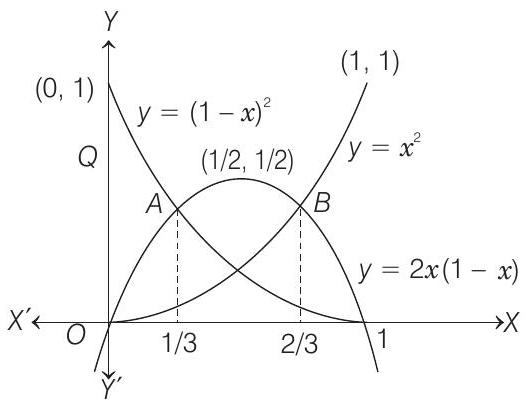Area Question 38
Question 38
Determine the area of the region bounded by the curves
Show Answer
Solution:
- We can draw the graph of

Now, to get the point of intersection of
Similarly, we can find the coordinate of the points of intersection of
From the figure, it is clear that,






